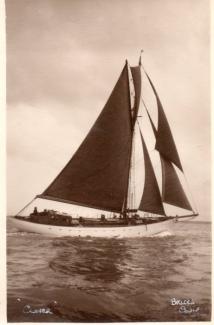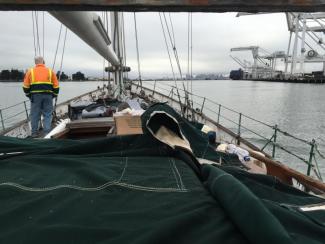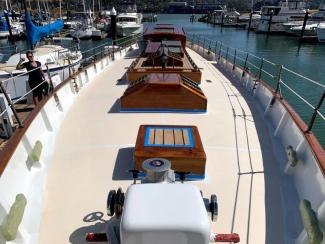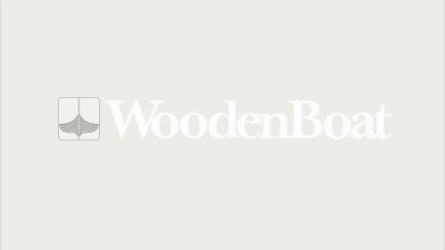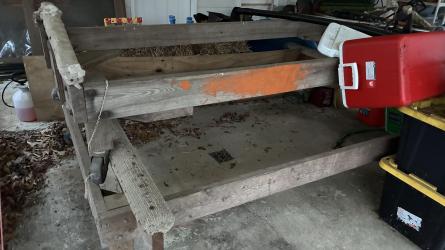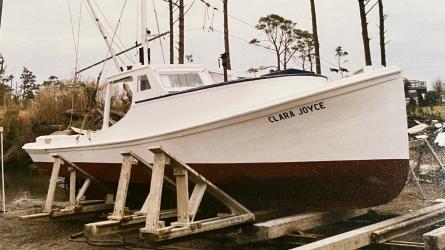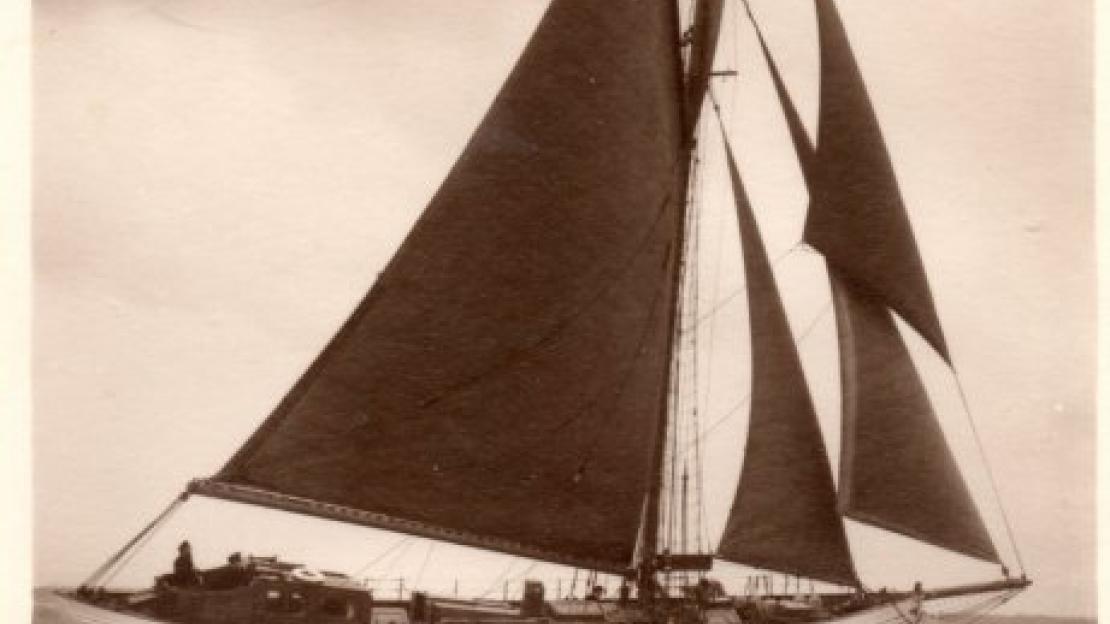
CLOVER
Wooden Boats for Veterans (WBFV) was founded in the USA in 2016 by service-disabled military veterans as a not-for-profit private operating foundation – https://www.vetsboats.orgClover was designed by Albert Luke and built in 1938 by Luke Brothers Boatyard at Hamble, for Eric Dudley Thompson. A renowned yard for decades, Luke’s was targeted for destruction by the German Luftwaffe for building seaplanes and landing craft, and was bombed out of existence in 1940.Clover measures 68′ length overall, 50′ on the waterline, 14′3″ beam and 9′ draft. Her displacement is approximately 45 tonnes. She is traditionally carvel planked, using long pine planking and double sawn oak frames with staggered joints. She was fastened with what appear to be bronze spikes and is externally ballasted with a cast lead keel, estimated to weigh 5 tonnes and fastened with 1¼″ bronze bolts. The topsides have been refastened with stainless steel screws. Floors are steel straps, bolted through the keel and extending upwards five plank widths, through bolted to a single frame with bronze bolts.In Clover’s hull are set two oval metal plates, measuring about 27″ x 18″ at the port and starboard hull sides, forward of the leading edge of the ballast keel. These plates connect with 12″ diameter internally mounted vertical cylinders, with sealed tops supporting electrical junction boxes. This apparatus appears to be either a depth or echo sounding system; or an ASDIC system, developed by the British Admiralty’s Anti-Submarine Division between the World Wars.Also evident in the 1947 Beken photographs of Clover is an Admiralty pattern ship’s compass binnacle, mounted amidships on top of the main cabin. This would be a curious location for a yacht’s steering compass, but it is directly above the transducer equipment below. When – and why – this equipment was installed is still being researched, but it is known from the 1939 England population Register (taken on 29 Sept 1939, 3 weeks after the outbreak of WW2) entry by Eric Dudley Thompson that he was “Owner and Master of Yacht Clover, awaiting instructions from the Admiralty Control, Dartmouth”. It would seem that Clover was used during WW2 for operations requiring accurate detection and mapping of underwater objects and/or seabed profiles.Royal Cruising Club records show that Clover and Eric Thompson were members. Lloyds Register shows that Clover was sold in 1972 to the USA. She passed through the hands of several owners and transited the Panama Canal in the 1970’s, arriving in the San Francisco Bay Area. Clover was donated to WBFV in 2016, after lying uncared for and dormant for over ten years: sinking, damaged and close to being destroyed.Prior to deciding whether to accept Clover, WBFV commissioned a marine survey. She was in an advanced state of decay, with bilge pumps running constantly. She was taken from Alameda to Richmond, where Bay Marine Boatyard hauled her out for the first time in a decade. In June 2015, Clover was surveyed by renowned marine surveyor Kent Parker: he spent three days tap-testing, probing, and visually inspecting all the accessible structural areas. From the keel to the deck and from the stems to the horn timbers of the stern; all deck beams and carlins, hull frames and steel floors; the cabin hatches and internal partitions; and the mast and spars, deck and rigging end fittings, turnbuckles and chain plates… it was a thorough examination of the vessel’s condition, which now guides the restoration project.In March 2016, Clover began the first phase of her restoration, focusing on making her hull and deck watertight and addressing the immediate structural issues. In all, portions of five planks were removed and replaced; a fiberglass covering put on the deck; seven through-hull fittings and valves replaced; and the hull topsides and bottom painted. It was a start… Clover was then moved across from Bay Marine Boatyard to Sugar Dock, where her deck was covered, and work continued below decks to treat the corrosion in the bilges, repaint the floors, remove all electrical wiring and plumbing, remove and catalogue all the equipment, and prepare the engine and rig for removal. Still leaking, she was sealed up while preparations and funding were organised.In February 2018, Clover’s mast and rig were removed, also her aft cabin and engine. The full extent of the deterioration in the aft section was then realized: all her floors underneath the engine, and the engine bed rails and logs, would need replacement before any further restoration work on the deck or machinery could commence. The rig was stored, the engine sent for repainting, and the focus turned to raising funds for hauling the boat and recruiting volunteers to support a major refit.By 2019, Clover’s pilothouse, mast and rig, engine and tankage had been removed for repair; her stem and knightheads were repaired; and down below, her cabin sole beam structure was replaced. All of her gear and fittings had been removed, carefully catalogued and stored. Now it was time to tackle the more serious elements of the restoration. Clover was hauled in spring 2019 with these objectives: replace seven floors and install new engine bed rails in the aft section of the vessel; re-caulk her planking below the waterline; and reinstall the engine, pilothouse and tankage. In addition, the propeller shaft was removed and refurbished, and her shaft log and cutlass bearing were removed and replaced.In March 2020, Clover was moved from Pt. Richmond to Glen Cove Marina. Work began in earnest to repair the deck, hatches, sampson post and forward and aft mooring bitts. Work continued into the early part of 2021, with a completely new deck laid on top of the original deck, and all hatches and fittings strengthened and made watertight. Clover’s mast and boom, now fully repaired with fittings refurbished and reattached, await rigging and stepping this fall for which she was moved back to Richmond on 30 Sept 2021. Her new gaff, a spar she’s not carried in over five decades, has been generously donated by the schooner Freda B’s intrepid captain, Paul Dines, a past Commodore of the Master Mariners’ Association.For a detailed account of the work completed and remaining to return her to sailing condition, there is a full project report on the WBFV website - https://www.vetsboats.org/.
